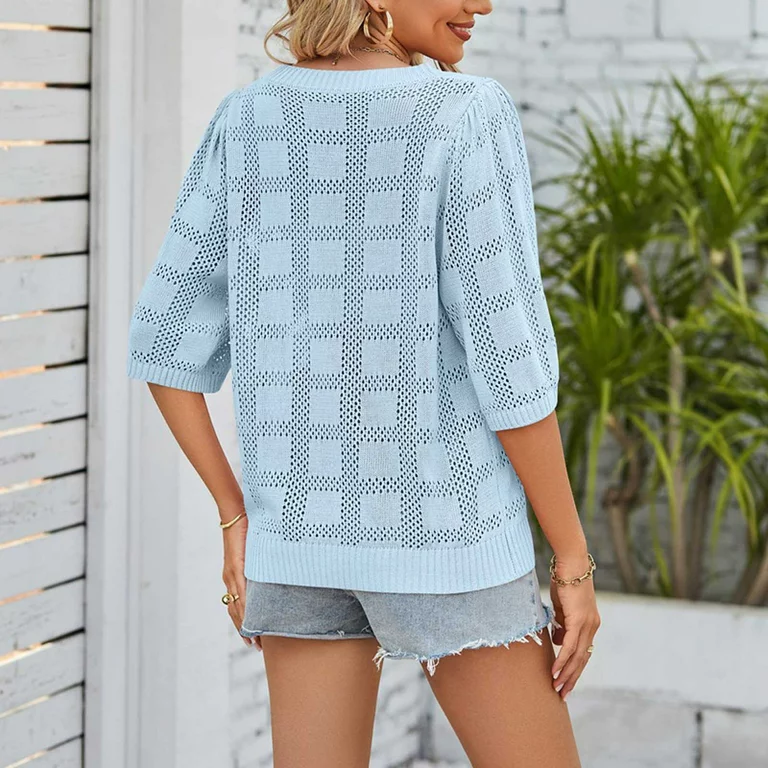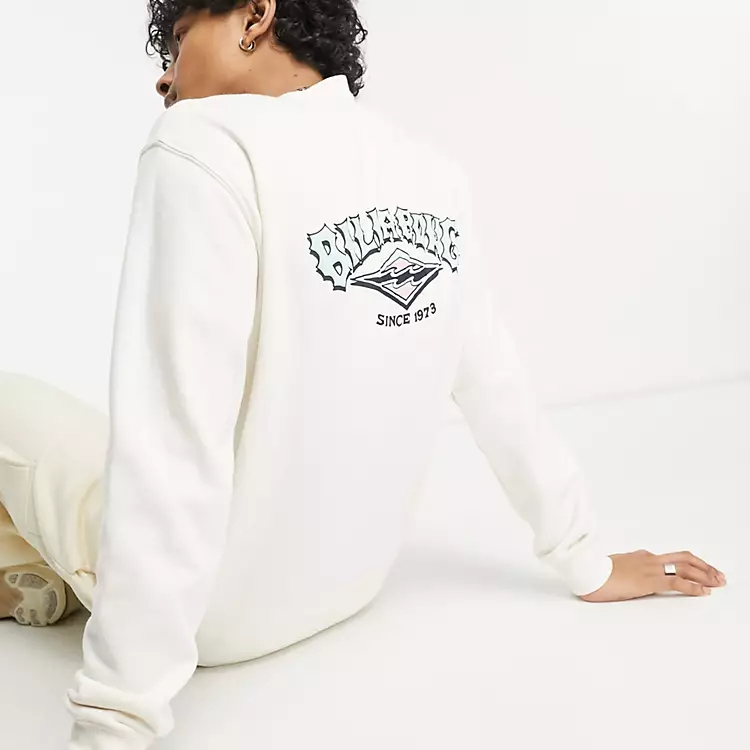Light sweaters for summer, in the selection of lightweight sweaters suitable for summer, several key factors should be taken into consideration to ensure that you make a choice that will provide both comfort and style during the warmer months.

Fabric:
Opt for breathable materials like cotton, linen, silk blends, or high-quality synthetic fibers designed to wick moisture away from the skin. These fabrics are light, airy, and can help you stay cool while still providing a layer of coverage against air-conditioning or cooler evenings. For instance, look for phrases such as “cotton blend”, “linen knit”, “silk jersey” or “lightweight synthetic”.
Weight and Texture:
Choose light sweaters for summer that are described as ‘lightweight’, ‘ultrafine’, ‘featherweight’, or ‘trans-seasonal’. They should have an open weave or loose knit pattern that allows air to circulate. A fine-gauge knit is perfect for this purpose.
Color and Pattern:
Summer-friendly colors include pastels, bright hues, and neutral shades that reflect sunlight. Patterns like stripes, checks, or floral prints can also add a seasonal touch to your outfit.
Sleeve Length and Style:
Short-sleeved or three-quarter length sleeve sweaters are ideal for summer. They offer enough warmth without being overly hot. You may also consider cropped styles or those with cut-out details for added ventilation.
Versatility:
Select pieces that can be dressed up or down, layered or worn on their own. This could mean choosing sweaters that pair well with shorts, skirts, or jeans, and can transition easily from day to night.
Fit and Comfort:
Ensure the sweater fits loosely and comfortably without clinging to your body. The silhouette should be relaxed and flowy to allow for ease of movement and to prevent overheating.
Quality:
Always check the quality of the garment. It should have neat stitching, no loose threads, and should retain its shape after washing. Even though it’s a summer sweater, investing in good quality ensures durability and longevity.
Seasonal Considerations:
Look out for features specifically designed for summer, such as UV protection or anti-bacterial properties which are often found in sportswear-inspired sweaters.
In summary, when shopping for a summer-appropriate lightweight sweater, prioritize breathable fabrics, seasonally appropriate designs, comfortable fits, and versatility to ensure that your purchase aligns perfectly with the demands of the warmer weather.
How to store lightweight sweaters suitable for summer
Storing lightweight sweaters for the summer months requires careful attention to preserve their quality and ensure they stay in excellent condition until the next season.
Cleanliness is Key:
Before storing any garment, it’s crucial to clean them thoroughly to prevent stains from setting and deter moths or other pests. Follow the care label instructions and wash or dry-clean the sweater accordingly.
Air Dry Completely:
After washing, lay the sweater flat on a clean towel to air-dry completely. Avoid hanging as this can cause stretching and distortion of the fabric shape.
Fold, Don’t Hang:
Fold the sweater neatly instead of hanging it. Hanging can lead to stretching, especially with delicate materials like cotton, linen or silk blends commonly used in summer sweaters. Stack them vertically in drawers or on shelves to maximize space and minimize wrinkles.
Use Proper Storage Containers:
Consider using breathable storage containers or cotton garment bags to allow air circulation and prevent moisture buildup. Avoid plastic bags or containers that can trap moisture and promote mildew growth.
Moisture Absorption:
To further protect against humidity, you could add natural moisture-absorbing items like cedar blocks or lavender sachets into your storage container. These not only absorb excess moisture but also have pest-repellent properties.

Separate Whites and Colors:
Store white and light-colored sweaters separately from darker ones to avoid color transfer.
Space Out Your Clothes:
Do not cram too many sweaters into one drawer or bag. Overcrowding can cause unnecessary creasing and may hinder airflow.
Check Regularly:
Periodically check on your stored sweaters to ensure there are no signs of mold or moth damage. If possible, refold them to prevent permanent creases.
Store in Cool and Dark Places:
Choose a cool, dark place to store your sweaters as sunlight can cause colors to fade over time. Basements or spare closets often provide ideal conditions.
Rotate Your Closet:
Consider rotating your wardrobe every few months. This helps to distribute wear and tear evenly and reminds you of what you own, reducing the temptation to overbuy.
Styling Tips for Light Sweaters in Summer
A. Pairing with shorts for a casual look:
When it comes to staying cool and stylish in the summer, light sweaters can be a great addition to your wardrobe. Here are some styling tips on how to pair them with shorts for a casual and trendy look:
- Choose the right length: Opt for shorts that hit at mid-thigh or above the knee to create a balanced and proportionate look. Longer shorts can make the outfit appear frumpy and heavy.
- Play with contrasting colors: Pair a light, neutral-colored sweater, such as a beige or pastel blue, with vibrant or patterned shorts. This creates a visually interesting outfit and adds a pop of color.
- Opt for lightweight fabrics: Look for lightweight cotton or linen shorts that match the breathability of your light sweater. This will ensure maximum comfort and prevent overheating.
- Tuck or half-tuck the sweater: Experiment with tucking the front of your sweater into the waistband of your shorts or doing a casual half-tuck. This will create a more polished and put-together look.
B. Layering over sundresses for added warmth and style:

Sundresses are a staple in every summer wardrobe, but they may not always provide enough warmth during cool summer evenings. Layering a light sweater over a sundress not only keeps you cozy but also adds a touch of style to your outfit. Here’s how to achieve that perfect layered look:
- Choose complementary colors: Pair a solid-colored light sweater with a patterned sundress or vice versa. This creates an eye-catching contrast and adds dimension to your outfit.
- Experiment with different lengths: Play around with different lengths of sweaters and sundresses to create visual interest. For example, pair a cropped light sweater with a maxi sundress or a longer cardigan with a shorter sundress.
- Pay attention to the neckline: Consider how the neckline of your sundress works with the neckline of your light sweater. For instance, a V-neck sweater can beautifully complement a scoop-neck sundress.
- Use belts or statement accessories: Add a belt around your waist to cinch the layered outfit and define your silhouette. Alternatively, accessorize with statement jewelry or a stylish hat to elevate the overall look.
C. Mixing and matching with different patterns and colors:
One of the advantages of light sweaters is their versatility when it comes to mixing and matching patterns and colors. Here are some tips to help you create stylish outfits:
- Start with a neutral base: Begin with a neutral-colored light sweater, such as white, gray, or beige. This will serve as the foundation for your pattern mixing.
- Pair different scales of patterns: Combining patterns of different scales can create a visually interesting and stylish outfit. For example, pair a small floral-printed skirt with a light sweater featuring a larger geometric pattern.
- Stick to a color palette: To maintain a cohesive look, choose patterns in the same color family or complementary colors. This ensures that the outfit doesn’t appear too busy or overwhelming.
-
Use solids as anchors: If you prefer a more subdued look, wear a solid-colored light sweater with a patterned bottom or vice versa. The solid piece acts as an anchor, grounding the outfit and balancing the overall look.
How to clean a light sweater suitable for summer
Cleaning lightweight sweaters for summer is a delicate process to maintain their softness, color, and shape.

Check the Care Label:
Always start by reading the care label on the sweater. It will provide specific instructions for cleaning based on the fabric composition. Some may require hand washing, others machine washing on a gentle cycle.
Hand Washing:
For many delicate or blended summer sweaters, hand washing might be the most suitable method. Fill a basin with lukewarm water and add a mild detergent designed for delicates. Gently submerge the sweater and agitate it gently without rubbing. Soak for about 5-10 minutes.
Machine Wash:
If the care label permits machine washing, use a gentle or wool cycle with cold water. Use a small amount of mild detergent and avoid using bleach or fabric softener which can damage fibers. Place the sweater in a mesh laundry bag to prevent snagging or twisting.
Rinse Thoroughly:
After washing, whether by hand or machine, rinse the sweater thoroughly to remove all soap residue. This is particularly important as leftover detergent can weaken fibers over time.
Gently Squeeze Water Out:
Avoid wringing or twisting the sweater to remove water; instead, gently press or squeeze out the excess water.
Lay Flat to Dry:
Never hang a sweater to dry as this can cause stretching and misshaping. Instead, lay it flat on a clean towel, reshaping it to its original form if necessary. Allow it to air-dry completely away from direct sunlight or heat sources.
Dealing with Stains:
Treat any stains before washing by gently applying a spot cleaner or dabbing with a mixture of water and mild detergent. Do not rub harshly as this can damage the fibers and spread the stain.
In conclusion
By following these steps, you’ll be able to effectively and safely store your summer-weight sweaters, preserving their quality, color, and shape so they’re just as fresh and stylish when you retrieve them for the next season.












